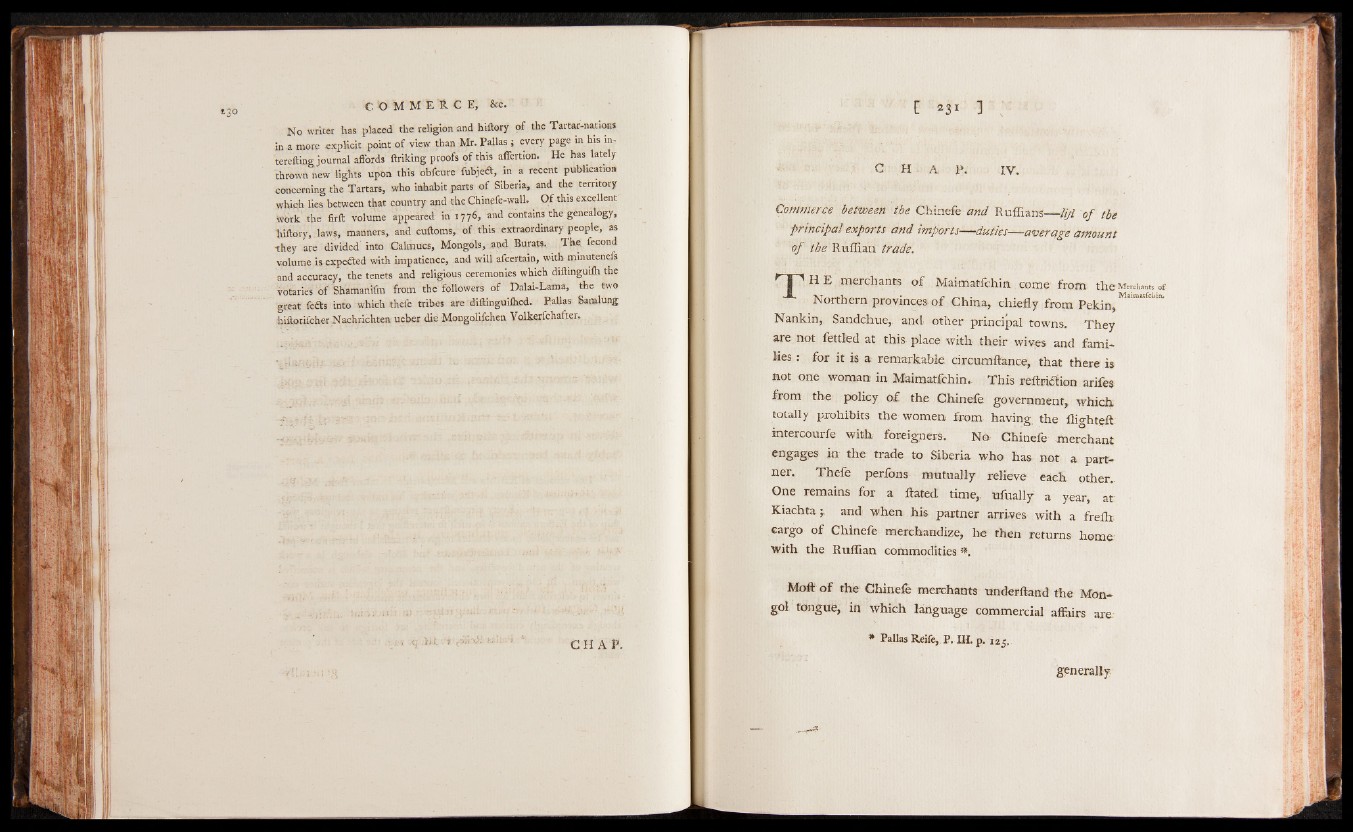
No writer has placed the religion and htftory o f the Tartar-nation*
in a more explicit point o f view than Mr. Pallas ; every page in his in-
terefting journal affords ftriking proofs o f this affertion. He has lately
thrown new lights upon this obfcure fubjedt, in a recent publication
concerning the Tartars, who inhabit parts o f Siberia, and the territory
which lies between that country and the Chinefe-wall. ' O f this excellent
Wcirk the fitft volume appeared in 1776, and contains the genealogy,
hiftory, laws, manners, and cuftoms, o f this extraordinary people, as
they are divided into Calmucs, Mongols, and Burats. The fecond
volume is cxpedted with impatience, and will afcertain, with minutenefs
and accuracy, the tenets and religious ceremonies which diftinguilh the
votaries o f Shamanifm from the followers o f Dalai-Lama, the two
great feds into which thefe tribes are diftinguilhed. Pallas Samlung
hiftor-iicher Nachrichten ueber die Mongolifchen Volkerfchaftev.
C H A P.
C H A p. IV.
Commerce between the Chinefe and Ruffians— lijl of the
principal exports and imports— duties— average amount
of the Ruffian trade.
I w b jw w w s cumc. nurrJn_ _r_n_e . .....
Northern provinces-of China, chiefly from Pekin, | S S |
Nankin, Sandchue, and other principal towns. They
are not fettled at this place with their wives and families
: for it is a remarkable circumftance, that there is
not one woman in Maimatfehin, This reftricftion arifes
from the policy of the Chinefe government, which.
totally prohibits the women from having the flightgft
intercourfe with foreigners. No Chinefe merchant
engages in the trade to Siberia who has not a partner.
Thefe perfons mutually relieve each other..
One remains for a Hated time, ufually a year, at
Kiachta and when his partner arrives with a frefli
cargo of Chinefe merchandize, lie then returns home
with the Ruffian commodities *.
Moft o f the Chinefe merchants underhand the Mongol
tongue, in which language commercial affairs are
* Pallas Reife, P. IH. p. 125.
generally